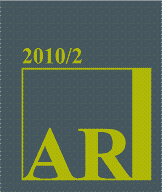Arhitektura vodnih mlinov v
južni Srbiji
The Wa ter Mills Architecture
in the South of Serbia
Author(s): Ana Momčilović-Petronijević, Biljana AranđelovićSubject(s): Architecture
Published by: Fakulteta za arhitekturo, Univerza v Ljubljani
Keywords: water mills; heritage; history of architecture; traditions; ethnography; the Morava style
Summary/Abstract: The water mill structures were very frequent in the rural territory of south Serbia until the half of 20th century. Their architecture is unique, and mostly in the regional Morava style. Unfortunately, due to neglect these unique structures were not only abandoned but in most part devastated. It is supposed that they existed in these areas as early as in the ancient times, due to the favorable natural conditions. The land lords used to bestow villages to monasteries and churches, and with them, sometimes, the water mills. For such water mills there were special legal regulations. In the medieval historical sources, apart from the monastery or church water mills, there were those belonging to entire villages or village districts. In near past one could find a favorable river location for a water mill without the actual water mills. The population swelled in villages, in the periods nearing the end of the Turkish rule, and between the two world wars. For this reason, the major part of the watermill was constructed then. The water mills were usually constructed at those parts of river valleys with rapids. From the riverbeds, water was conducted, by means of flumes to the required height of the water mills. One flume could accommodate two, three even six water mills. The water mills remained what they used to be in the ancient past: form, structure, certain parts with names, order, manner of usage etc.
Journal: AR Arhitektura, raziskave
- Issue Year: 2010
- Issue No: 2
- Page Range: 59-62
- Page Count: 4
- Language: English

